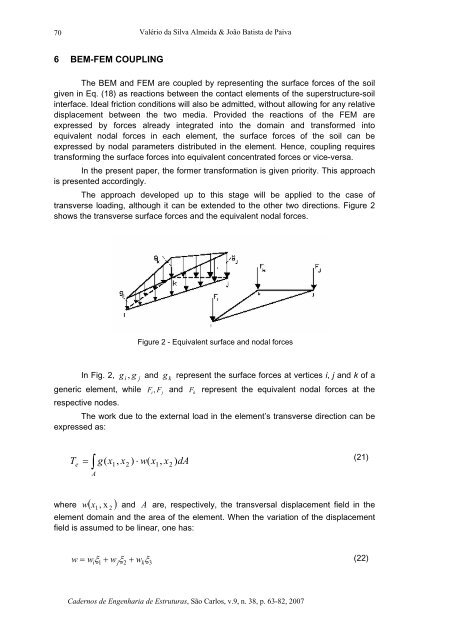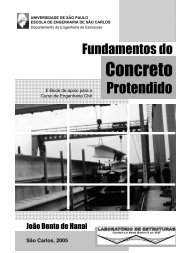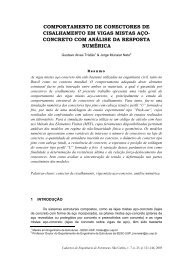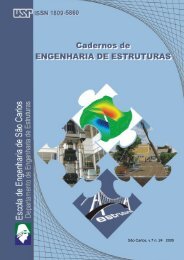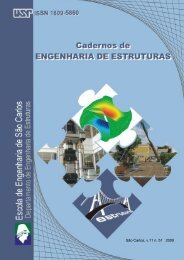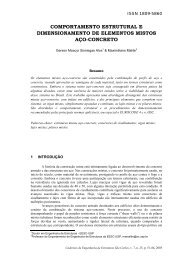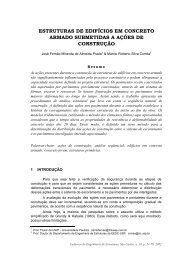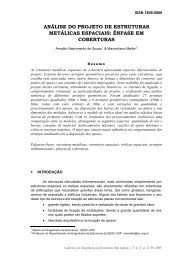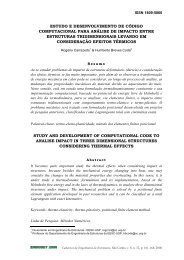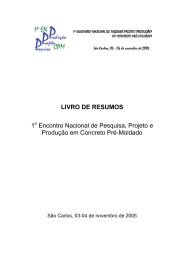download completo - SET - USP
download completo - SET - USP
download completo - SET - USP
You also want an ePaper? Increase the reach of your titles
YUMPU automatically turns print PDFs into web optimized ePapers that Google loves.
70<br />
Valério da Silva Almeida & João Batista de Paiva<br />
6 BEM-FEM COUPLING<br />
The BEM and FEM are coupled by representing the surface forces of the soil<br />
given in Eq. (18) as reactions between the contact elements of the superstructure-soil<br />
interface. Ideal friction conditions will also be admitted, without allowing for any relative<br />
displacement between the two media. Provided the reactions of the FEM are<br />
expressed by forces already integrated into the domain and transformed into<br />
equivalent nodal forces in each element, the surface forces of the soil can be<br />
expressed by nodal parameters distributed in the element. Hence, coupling requires<br />
transforming the surface forces into equivalent concentrated forces or vice-versa.<br />
In the present paper, the former transformation is given priority. This approach<br />
is presented accordingly.<br />
The approach developed up to this stage will be applied to the case of<br />
transverse loading, although it can be extended to the other two directions. Figure 2<br />
shows the transverse surface forces and the equivalent nodal forces.<br />
Figure 2 - Equivalent surface and nodal forces<br />
In Fig. 2, g i , g j and g k represent the surface forces at vertices i, j and k of a<br />
generic element, while F<br />
i, Fj<br />
and F k<br />
represent the equivalent nodal forces at the<br />
respective nodes.<br />
The work due to the external load in the element’s transverse direction can be<br />
expressed as:<br />
∫<br />
T = g x , x ) ⋅ w(<br />
x , x ) dA<br />
e<br />
A<br />
( 1 2 1 2<br />
(21)<br />
where ( x , )<br />
w and A are, respectively, the transversal displacement field in the<br />
1 x 2<br />
element domain and the area of the element. When the variation of the displacement<br />
field is assumed to be linear, one has:<br />
w = wξ<br />
+ +<br />
(22)<br />
i 1 wjξ2<br />
wkξ3<br />
Cadernos de Engenharia de Estruturas, São Carlos, v.9, n. 38, p. 63-82, 2007


